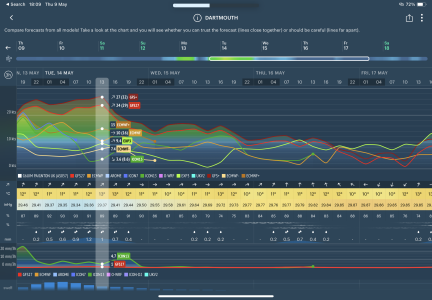franksingleton
Well-Known Member
I was really just reflecting thst it is an odd world. There is a strong correlation between CO2 and global temperature. The scientific approach is to say that that suggests a physical connection. They want to know why. Therefore, they study the physical processes, develop a model, show why the statistics produce the observed result. From that, given CO2 emission scenarios, they predict outcomes at various future times. Some people refuse to accept the results.I guess it would depend on the model. As you said, AI models don’t “understand” anything but yes perhaps they could extrapolate enough from what’s happened if given all of the data.
I think my reply was a bit of a knee jerk “but climate change is new” but I guess in the scheme of things what I said about the physics also applies and the AI would have data with rising CO2 and patterns changing. Whether it could extrapolate out to uninhabitable tropics and massive storms elsewhere I don’t know as there are no stats for it to lean on but in theory those are all just rules playing out if you zoom out enough.
AI can take the same raw data. It could work just with observed temperatures in the observation record with CO2 emissions for the same period. The correlation is so strong that AI will recognise the link between CO2 and temperature. AI, if asked to do so, could produce forecasts at future times. Given the strong correlation there can be no reason why AI will not come up with a result showing continued warming. Of course, I go not know how close those will be to climate models, but it is bound to show continued warming. Because it is an AI result many people will accept the result. I am very happy that they should do so but cannot help reflecting that many people will more readily accept numbers coming out of a black box than from a scientific study that is based on understanding of the data.
It would be interesting to let AI loose on all the data available back to several million years ago. It could go back to when CO2 was higher than current values but decreasing to the values that we had several 100,000 years ago. I suppose that a weakness of AI for climate prediction is that it can only work on actual CO2, temperatures and emission data. I suppose that it could be fed withm future emission and mitigation strategies.
Last edited:

